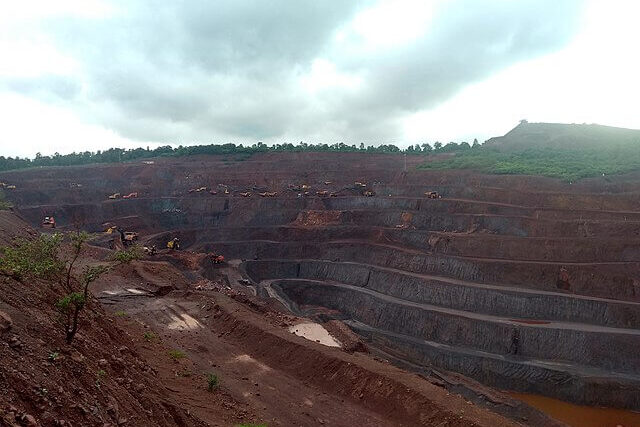
A recent study revealed that a minimum of 23 million people worldwide inhabit flood-plains contaminated by potentially harmful concentrations of toxic waste stemming from metal-mining activities.
The researchers meticulously mapped the globe’s 22,609 operational and 159,735 abandoned metal mines, calculating the extent of pollution they have caused.
Mining operations can result in the leaching of chemicals into the soil and waterways, posing significant environmental and health concerns. Prof Mark Macklin from the University of Lincoln, who led the research, emphasises the need for meticulous planning of future mining endeavours, particularly given the rising demand for metals essential for battery technology and electrification, such as lithium and copper.
“We’ve known about this for a long time,” he told BBC News. “What’s alarming for me is the legacy – [pollution from abandoned mines] is still affecting millions of people.”
The findings, published in the journal “Science,” build on previous research that explored how mining pollution moves and accumulates in the environment.
The scientists aggregated data on global mining activity from various sources, including government publications, mining companies, and organisations like the US Geological Survey. This data encompassed the location of each mine, the extracted metal, and whether the mine was active or abandoned.
Prof Macklin elucidated that the majority of metals from metal mining become entrapped in sediment in the ground.
“It’s this material – eroded from mine waste tips, or in contaminated soil – that ends up in river channels or [can be] deposited over a flood-plain.”
The research team employed previously published field and laboratory analyses to calculate the distance over which metal-contaminated sediment travels along river systems. This information enabled them to construct a computer model that gauged the extent of river channels and flood-plains around the world tainted by mining waste from both current and historical operations.
“We mapped the area that’s likely to be affected, which, when you combine that with population data, shows that 23 million people in the world are living on ground that would be considered ‘contaminated’,” said Chris Thomas, who is professor of water and planetary health at the University of Lincoln.
“Whether those people will be affected by that contamination, we simply can’t tell with this research, and there are many ways that people may be exposed,” he stressed. “But there is agriculture and irrigation in many of those areas.”
Crops grown in contaminated soils or irrigated with water polluted by mining waste have been found to contain elevated metal concentrations, posing health risks to those consuming these crops.
“Animals grazing on flood-plains may also eat contaminated plant material and sediment, especially after flooding, when fresh metal-rich sediment is deposited,” the scientists explained in their paper.
“With climate change and more frequent floods,” Prof Macklin added, “this legacy [pollution] is going to extend and expand.”
Prof Jamie Woodward from the University of Manchester, who was not involved in the study, noted that the research underscores the threat posed by “silent pollution” stored in flood-plains.
“A good deal of river monitoring is focused on water when the real ‘nasties’ are often associated with river sediments,” he told BBC News.
“We need to better understand how contaminants are transported in the environment and where they are stored. This allows us to assess hazards and to mitigate against them. Heavily contaminated flood-plain grasslands should not be used for livestock grazing, for example.”
The study’s authors emphasise that metal mining represents “humankind’s earliest and most persistent form of environmental contamination,” with mining waste contaminating river systems as early as 7,000 years ago. This research underscores the critical need for responsible mining practices and the mitigation of environmental impacts.
——————————————————————————
At Natural World Fund, we are passionate about stopping the decline in our wildlife.
The decline in our wildlife is shocking and frightening. Without much more support, many of the animals we know and love will continue in their decline towards extinction.
When you help to restore a patch of degraded land through rewilding to forests, meadows, or wetlands, you have a massive impact on the biodiversity at a local level. You give animals a home and food that they otherwise would not have had, and it has a positive snowball effect on the food chain.
We are convinced that this is much better for the UK than growing lots of fast-growing coniferous trees, solely to remove carbon, that don’t actually help our animals to thrive.
This is why we stand for restoring nature in the UK through responsible rewilding. For us, it is the right thing to do. Let’s do what’s right for nature!
Donate today at https://naturalworldfund.com/ and join in the solution!

